The Battle of Funchal: Germany's 1916 Assault on Madeira
In December 1916, Madeira became the site of a significant naval attack during World War I. On the 3rd and 16th of December, the Imperial German Navy submarine U-38 launched two strikes on Funchal, being one of the most severe assaults on Portuguese territory during the war.
How and Why Portugal Entered World War I
Portugal initially remained neutral when World War I began in 1914. However, tensions with Germany rose because of Portugal’s close ties with Britain, its colonial ambitions in Africa, and the presence of German ships in Portuguese ports.
In February 1916, Portugal seized several German merchant ships in Lisbon harbor. Germany saw this as an unfriendly act, especially since Portugal had not yet formally joined the war.
As Portugal increasingly aligned with the Allies, it began supporting their military efforts, including sending troops to Africa to fight German colonial forces.
Germany Declares War on Portugal
Germany formally declared war on Portugal on March 9, 1916. This declaration followed Portugal’s seizure of German ships and its growing cooperation with Allied powers. Portugal then officially entered World War I on the side of the Allies, contributing both in Europe and in African campaigns.
Why Germany Attacked Funchal: Strategic Objectives Behind the Assault
Germany's decision to target Funchal was influenced by a combination of strategic objectives and political developments. Madeira was strategically located along maritime routes. The German High Command likely viewed the island as a potential threat to its naval operations and sought to disrupt Allied communications and logistics by attacking Portuguese-controlled territories. The attacks on Funchal were part of a broader German strategy to weaken Allied positions and demonstrate the reach of its naval forces.
Natural conditions and the lack of infrastructure prevented the establishment of a naval base, despite the strategic value of the island in the context of the Atlantic routes.
December 3, 1916: The German U-38 Torpedoes Three Ships in Funchal Harbour
On the morning of December 3, 1916, German submarine U-38, under the command of Max Valentiner, entered Funchal harbour. The submarine torpedoed and sank three vessels:
the French gunboat Surprise (680 tons, 56m length)
the French heavy-lift ship Kanguroo (2,493 tons, 56m length)
the British cable-laying vessel CS Dacia (1,856 tons)
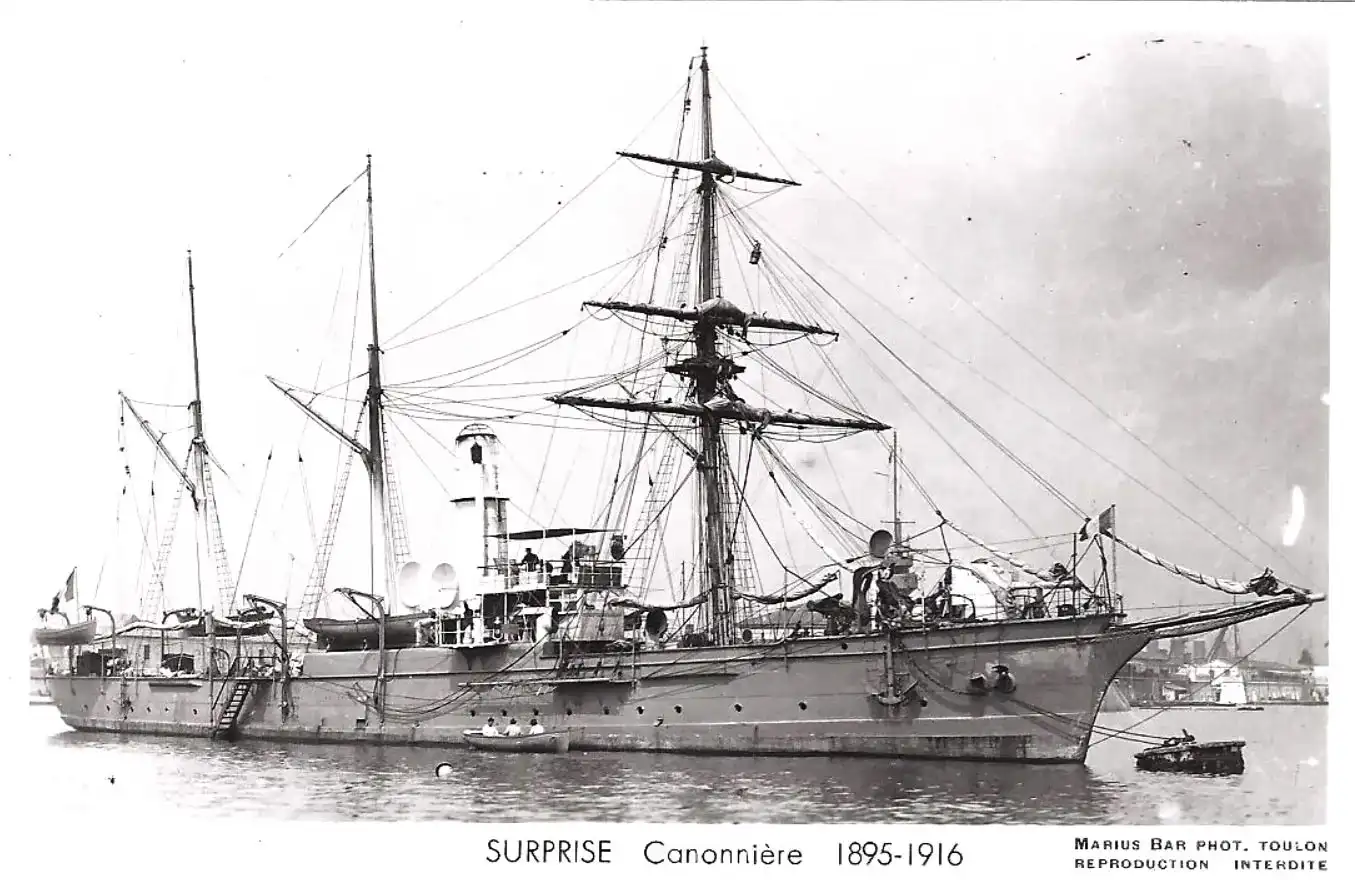
The attack resulted in the deaths of more than 40 individuals, including 34 crew members of the Surprise, seven Portuguese nationals, six coal carriers aboard the barge, one employee of the Blandy’s company, and three military personnel stationed at the Quinta Vigia battery.
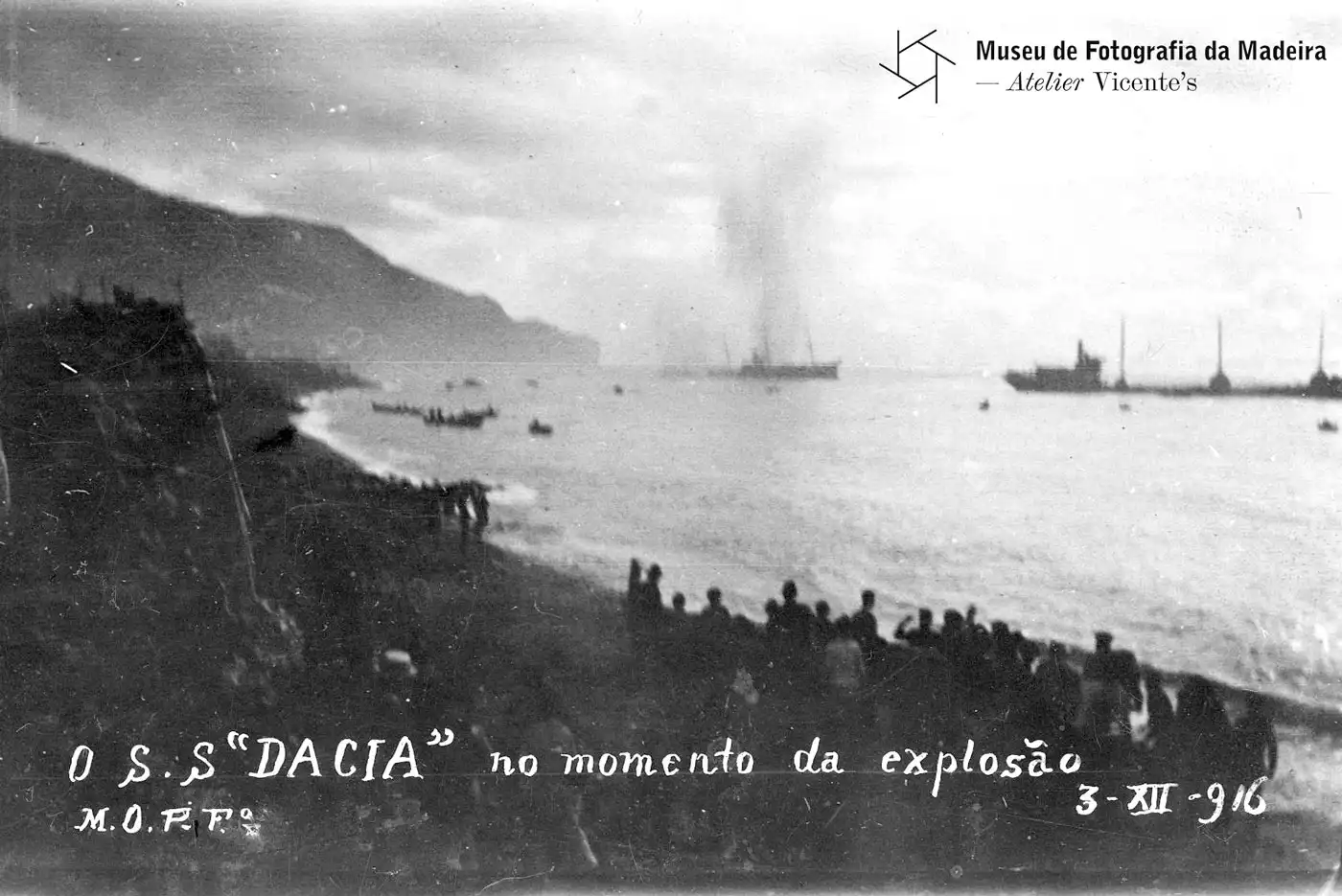
German Submarine Bombards Funchal for Two Hours
Following the sinking of the ships, U-38 proceeded to bombard Funchal for approximately two hours from a distance of several kilometres. The submarine targeted the submarine cable station, electricity generators, and coastal artillery batteries at Quinta Vigia and Forte de São Tiago. Although the batteries returned fire, the sea conditions and distance limited their effectiveness - they were unsuccessful. Nonetheless, several civilian buildings in downtown Funchal sustained colateral damage.
Many families were forced to leave their homes and move to the outskirts of Funchal, including areas like Monte, S. Roque, S. Martinho, Santo António, and Caminho de Palheiro. The bombardment had caused widespread panic, and because people feared another night attack, shops in the city closed early and remained shut during the night.
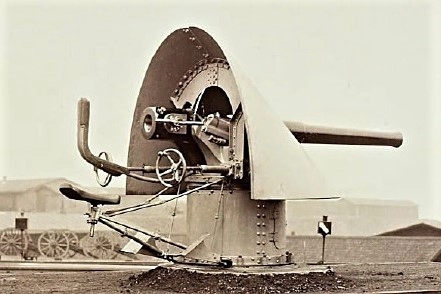
Portuguese Coastal Defenses: Limited but Determined
At the time of the attacks, Madeira's coastal defenses were modest. The Portuguese navy stationed three patrol boats:
NRP Dory
NRP Dekade I
PNR Mariano de Carvalho
They were requisitioned yachts armed and modified for military purpose with 47mm cannons. These vessels were manned by a mix of military personnel and civilians. Despite the vessels and coastal batteries, these limited resources engaged the submarine during the bombardment, but were unable to prevent the attack.
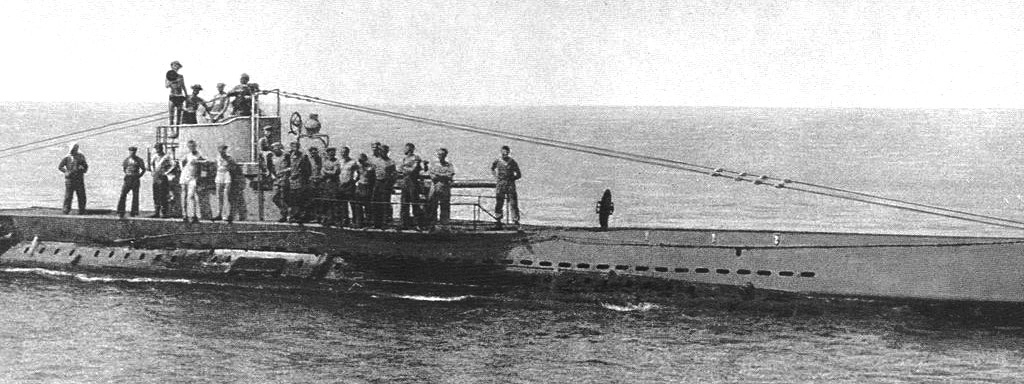
Civilian Casualties and Material Damage
The December 3rd attack resulted in significant civilian casualties and material damage. In addition to the 43 fatalities, approximately 38 individuals were injured. The bombardment caused extensive damage to civilian infrastructure, it targeted the submarine cable station, electricity generators, and batteries, and hit residential buildings and public facilities.
German Commander Valentiner Receives High Honour
In recognition of his successful attacks, German submarine commander Max Valentiner was awarded the prestigious Pour le Mérite on December 26, 1916. This honour was one of the highest military awards in the German Empire, acknowledging Valentiner's effective execution of the sinking of the ships and the assaults on Funchal. In his memoirs, he recounted the attack on Funchal:
I was disappointed with what I saw. I was expecting to find a large English squadron. In the harbor there was nothing but a six-masted American ship, which I couldn’t attack because it was neutral.
Behind it was the French Navy gunboat Surprise, and next to it the steamer that had just entered, the Dacia. In front of the Dacia was the Kangourou, a French submarine transport ship. But before getting closer, I found myself among a group of small fishing boats — I was afraid of getting caught in their nets.
I raised the periscope to see better and saw in front of me a Portuguese fisherman with a tanned face, who at the same time saw the periscope. He stood there, mouth open, with an indescribable expression that I will never forget. He began to cry and frightened his companions.
Then the fishermen cut their moorings and rowed quickly back to port. I had to act. I increased speed and steered toward the stern of the American ship, which was blocking my view of the Surprise, about 500 meters away.
We prepared all the torpedoes; I aimed at the middle and fired. The Surprise was hit squarely amidships, probably in the ammunition stores. It sank with a barge after the explosion.
For the second shot, the torpedo struck the Dacia. As the steamer was sinking, the crew began firing their weapons, but it was useless. My bow was already aimed at the middle of the Kangourou.
I launched my third torpedo. The crew saw the monster coming, ordered the abandonment of the ship, and were already in the lifeboats when the torpedo hit the middle of the vessel. On the shore, the Portuguese forts began to open fire.
Max Valentiner, La terreur des mers - Mes aventures en sous-marin, 1914-1918
Portuguese Reinforcements Arrive in Funchal
In response to the attacks, the Portuguese navy dispatched the auxiliary cruiser NRP Pedro Nunes from Lisbon. The vessel arrived in Funchal on December 31, 1916, bringing additional personnel and artillery to bolster the island's defenses. This reinforcement aimed to enhance the local garrison's capacity to respond to future threats.
Second Bombardment on December 16
Thirteen days after the initial assault, U-38 returned to Funchal on December 16, 1916, to conduct a second bombardment. The attack commenced at 06:00h. and lasted approximately 20 to 30 minutes. During this time, the submarine fired nearly 50 rounds, resulting in five fatalities and 30 injuries. One of the projectiles struck the Church of Santa Clara, injuring the priest. The city's telegraph station was also damaged, further disrupting communications.
Memorials and Commemorations
In the aftermath of the attacks, efforts were made to commemorate the events and honour the victims. In 1927, a statue of Nossa Senhora da Paz (Our Lady of Peace) was erected at Terreiro da Luta, constructed from chains recovered from the torpedoed ships. This memorial serves as a symbol of the resilience and remembrance of the citizens of Funchal.
December 12, 1917: Renewed German Attack on Funchal Leaves Three Dead
A year after the first assaults, Funchal faced another German naval attack. On December 12, 1917, two German submarines - U-156 and U-157, the latter again commanded by Max Valentiner - approached Madeira and opened fire on the city. The bombardment lasted around 30 minutes, during which the submarines fired about 40 shells of 4.7-inch and 5.9-inch calibre.
Three people were killed and seventeen were injured. Several houses were damaged, and the Convent of Santa Clara was hit once more. This third strike formed part of Germany’s broader campaign of unrestricted submarine warfare, which aimed to disrupt Allied communications and shipping rather than occupy new territory. The attack also demonstrated the continued reach of the Imperial German Navy and the ongoing vulnerability of Atlantic outposts such as Madeira.
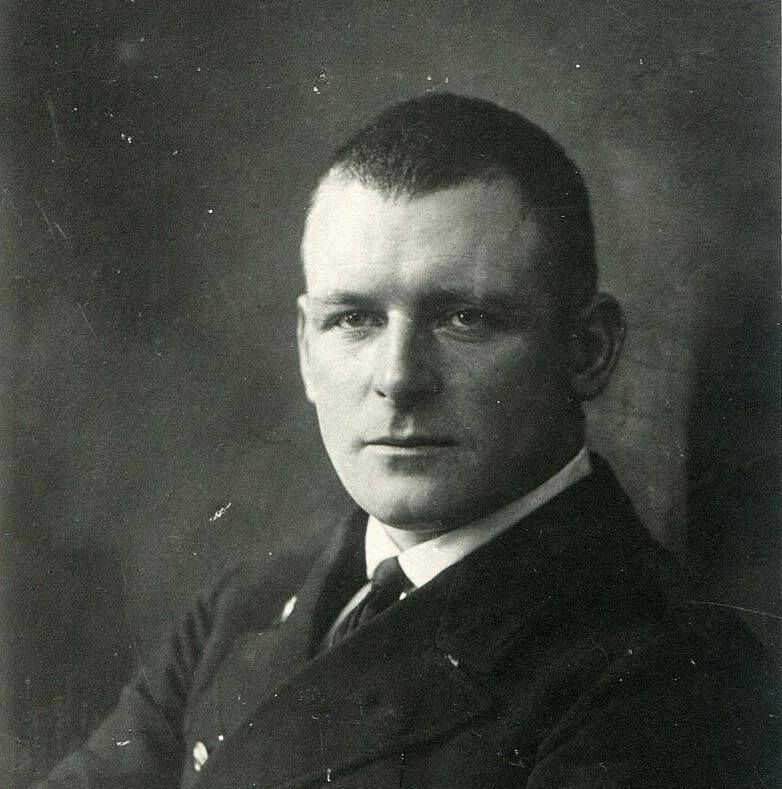
The Later Years of Submarine Commander Max Valentiner
Valentiner was credited with sinking around 150 ships, totaling about 300,000 tons. After World War I and the Treaty of Versailles, he lost his submarine command and was placed on a list of suspected war criminals by the Allies, living for a time under the name “Carl Schmidt.” He later returned to Kiel, Germany, where he worked in civilian jobs trading engines and machine parts for various companies. When World War II began, Valentiner was recalled to serve in the German Navy. He died in 1949 at the age of 65 from lung disease, which was probably caused by breathing in toxic fumes from the engines of his first U‑boats, U‑10 and U‑3.
Lasting Impact on Madeira's History
The Battle of Funchal remains a significant event in Madeira's history, highlighting the vulnerability of remote territories during global conflicts. The attacks underscores Madeira's strategic importance and the challenges faced by Portugal in defending its overseas territories during World War I. The memorials and commemorations continue to serve as reminders of the island's wartime experiences and the enduring spirit of its people.
Image: illustration by Willy Stöwer from 1916, picturing two submarines instead of one

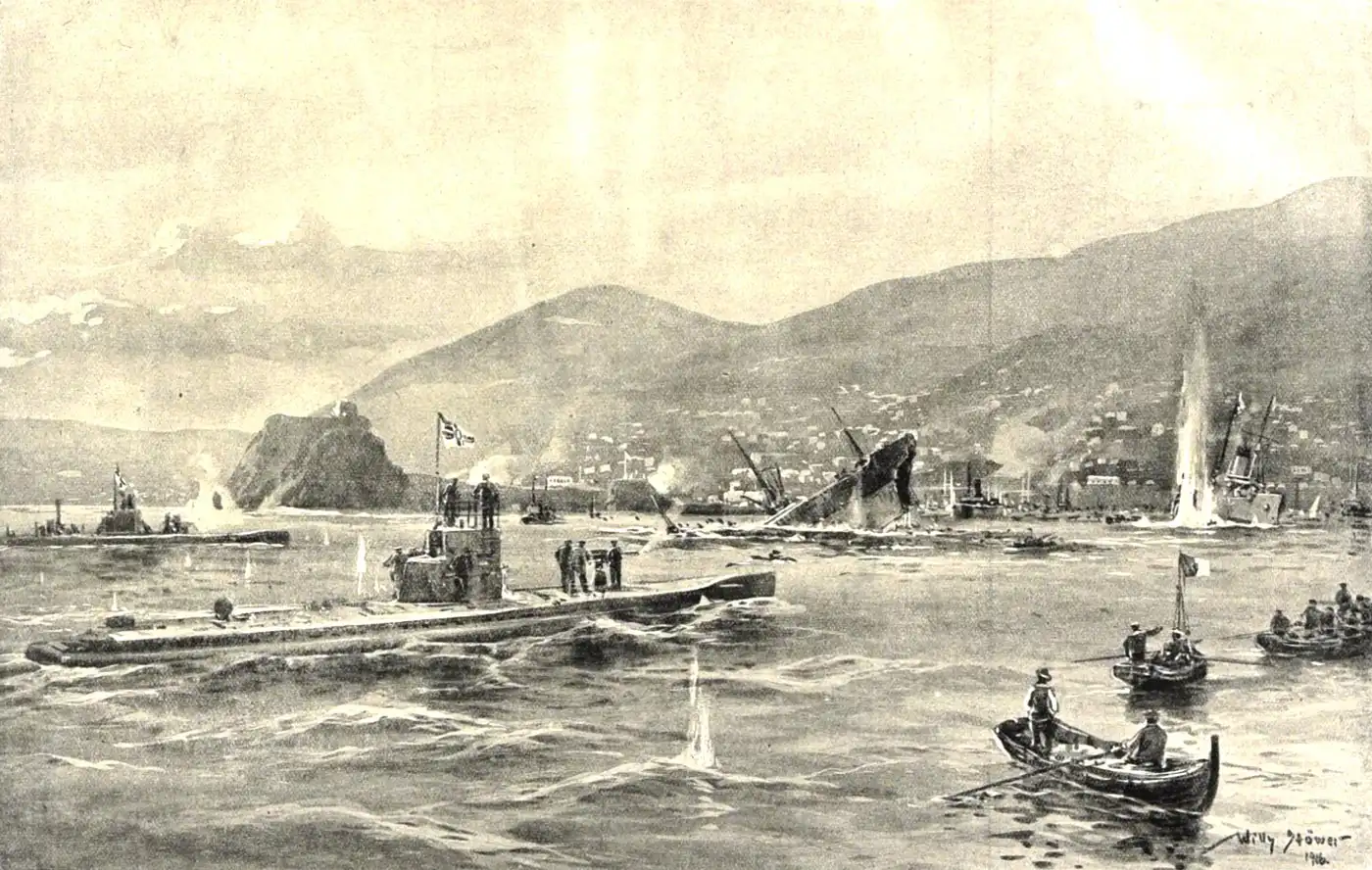





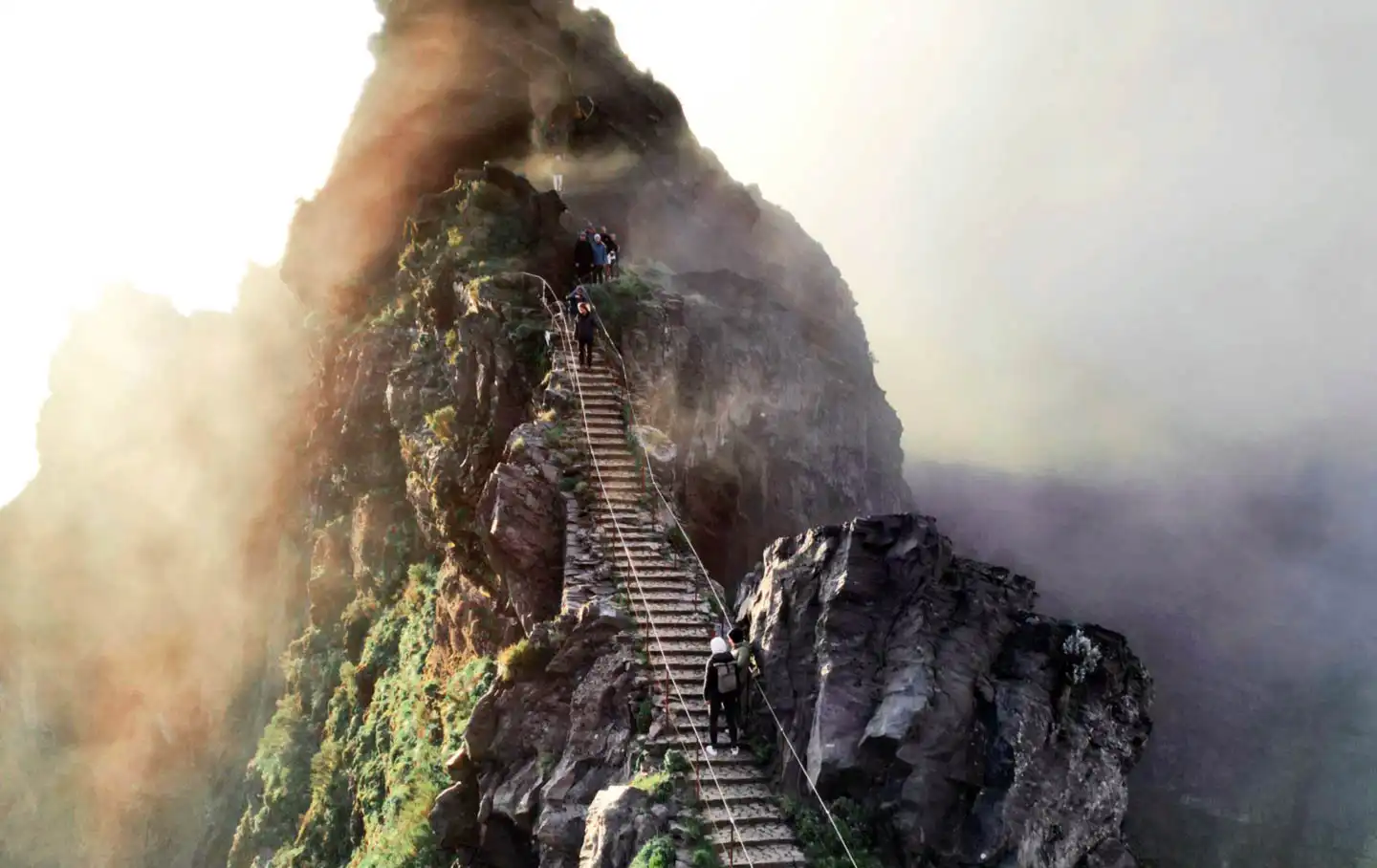
Comments